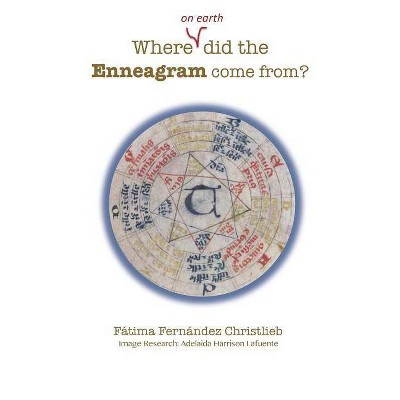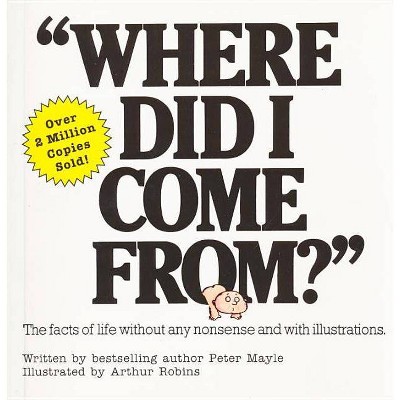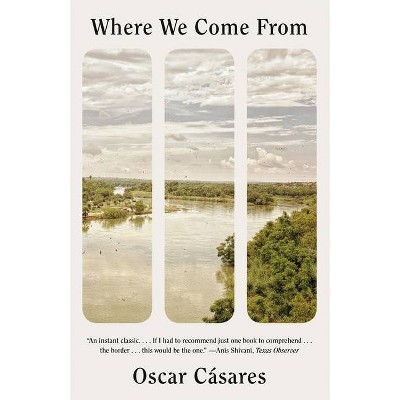Where (on Earth) did the Enneagram come from? - by Fátima Fernández Christlieb (Paperback)

Similar Products
Products of same category from the store
AllProduct info
<p/><br></br><p><b> About the Book </b></p></br></br>Many authors have ventured to write about the history of the Enneagram, but none have done detailed research like Fátima Fernández Christlieb. Everything is described in accessible language with countless notes and suggestions for further reading for those who wish to delve deeper into this subject.<p/><br></br><p><b> Book Synopsis </b></p></br></br><p>Perhaps the history we seek begins in Uruk, a settlement on the Eastern bank of the Euphrates, 225km from modern Baghdad. Uruk, which may be the origin of the modern country-name Irak, was at its height in the 3rd millennium BCE and is important to this history because there was a temple there (Cassin et al, 1982: 42), that is to say, a place of meeting for the human community, an incipient vestige of a great civilization: the Chaldean and the Babylonian. This city is described at the beginning of one of the oldest jewels of literature: the epic poem of Gilgamesh, who was at one time King of Uruk. As we will see, this relic of Mesopotamian culture would be mentioned by John Bennett, one of Gurdjieff's disciples.</p> <p>The ancient world, in which the wisdom of the Enneagram was forged, was not divided into nation states, nor were the frontiers between countries those that we know today. Knowledge flowed, sooner or later, between those truly interested in the fundamental questions of human beings and of the world. In spite of the --for us-- precarious modes of transport, in the centuries before the common era there was a great exchange of information and practices between those who sought to further the development of the mind and the potential of men and women.</p> <p>The categorical division between East and West clouds our perception of reciprocal influences in ancient times. There is evidence of contact, for example, between the Chinese and the area where we are going to focus a great deal of our attention: Turkestan. An outstanding scholar of Taoism, doctor of philosophy and translator of the Tao Te Ching into Spanish, Iñaki Preciado writes "Towards the end of the 3rd Millennium BCE, as a result of the Huaxia expansion, some tribes that had until then lived on the plains of central China, were expelled and had to move to the lands of present day Turkestan... According to another version, a chief of the Zhou tribes sent one of his advisors to the region of the Pamir where he founded a kingdom" (Lao Tsé [Preciado], 2012: 45). Both accounts refer to areas in which Gurdjieff travelled before he founded his school; at the same time they are an example of how relative historical statements can be.</p> <p>There are also similarities - though not necessarily through direct contact - between Greek and Chinese writings in the 5th century BCE: "... there are no fundamental differences in Eastern and Greek thought during the Pre-socratic period. It is from Plato and Aristoteles onwards, and more specifically from Euclides and Archimedes, that Greek thought takes a new turn which becomes decisive for the Western world" (García, 2000: 188).</p> <p>In antiquity knowledge had a locatable origin, but as it developed the different authors' tracks become blurred as cultures, learning and behavior blend. Unless defending a specific cause, religion, ethnicity or sect, those who seek the roots of the Enneagram must agree that the confluence of different forms of knowledge has given us all we know today.</p> <p>The last 25 centuries of humanity present a history of mixtures, fusions and coincidences of discovery in one place or other. It is also a record of hostilities, comparisons of different approaches, of battles to gain leadership for a chief or an author. </p><p/><br></br><p><b> Review Quotes </b></p></br></br><br>If you are interested in the deep origins and complex and intertwined history of the Enneagram over the centuries, you will absolutely want to buy this book, read it, and keep it in your library for a very long time. Thoroughly researched and well-documented, this important new addition to the Enneagram literature is so well-written, it is hard to put down! Ginger Lapid-Bogda Phd (author of six Enneagram Books) In the Introduction to her book on the history of the Enneagram, Fatima Fernandez Christlieb wrote: "This book is intended mainly for those who have at some point wondered where the Enneagram came from." They won't be wondering after they read her book. This is a very scholarly thoughtful book that covers many centuries, cultures, and characters. This is not a cursory glib history. It is both a deep and broad consideration of the sources of the Enneagram whose intention is not only to inform readers but also to transform their lives through knowledge of the Enneagram. For serious students of the Enneagram, this book belongs on your shelf. Jerome Wagner, Ph.D.<br>
Price History
Price Archive shows prices from various stores, lets you see history and find the cheapest. There is no actual sale on the website. For all support, inquiry and suggestion messagescommunication@pricearchive.us




















